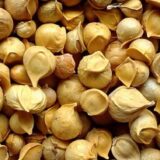Total ₹6,500.00

The Department of Culture and Tourism – Abu Dhabi has officially reopened the Al Ain Museum to the public after an extensive redevelopment led by Al Dabbagh Architects. The museum, the first of its kind in the UAE, extends over an area of more than 8,000 square meters and incorporates its original structure as a distinctive feature of its architectural narrative.
The Al Ain Museum was established in 1969 by the founding father of the United Arab Emirates, the late Sheikh Zayed bin Sultan Al Nahyan, to serve as a lasting testimony to the country’s deep cultural heritage. It remains a central institution in telling the story of the Al Ain region, home to one of the oldest continuously inhabited settlements in the world.
Speaking during the reopening, His Excellency Mohammed Khalifa Al Mubarak, Chairman of the Department of Culture and Tourism – Abu Dhabi, said:
“The Al Ain Museum holds a unique place in our collective memory and stands as a tribute to the vision of the late Sheikh Zayed, who recognized the importance of protecting our past to inspire future generations. The reopening of the country’s first museum represents a major milestone in our ongoing efforts to continue this legacy by preserving and sharing the UAE’s cultural heritage. Through its invaluable collections and dynamic new visitor experience, this institution will connect visitors, both local and international, to the deep roots of the Al Ain region’s history and civilization. An essential role in shaping our nation’s identity.” “The museum’s extensive collection traces 8,000 years of human history, displaying archaeological artifacts, traditional crafts and objects of material culture that highlight the customs and social fabric of Al Ain’s past and present. Visitors can explore newly discovered archaeological sites discovered during the redevelopment, which have been preserved as key features of the museum’s design. Among its highlights is a detailed display of the ancient Aflaj irrigation system, a UNESCO-recognized innovation that revolutionized desert agriculture and made long-term settlement in the region possible. Omar Salem Al Kaabi, Director of Al Ain Museum, said:
“Al Ain Museum serves as a gateway to understanding the cultural and archaeological significance of the Al Ain region. It provides visitors with essential context that pays homage to the UNESCO World Heritage Site, inspiring them to explore the magnificent landscape, ancient tombs and architectural landmarks with a deeper appreciation for their enduring value to human history and local heritage.”
The museum, which is located next to the Sultan Fort (Eastern Fort) on the outskirts of Al Ain Oasis, includes a dedicated research facility that supports ongoing excavations, interdisciplinary studies and restoration projects. The inclusion of interactive learning spaces, workshops and educational programs ensures that Al Ain Museum functions not only as a conservation center but also as an active center for academic exchange and public engagement. The museum’s café, retail shop, reading room, and temporary exhibition area, designed to create a comprehensive cultural experience, complete the visitor’s journey.
With its reopening, Al Ain Museum reaffirms its role as a cornerstone of Emirati heritage – connecting archaeology, community and education in one of the most historically rich regions in the Middle East.




